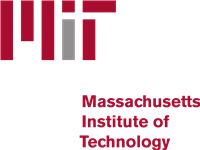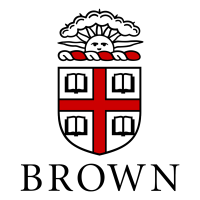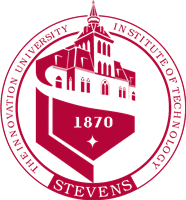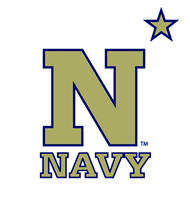What do they do?
Design technologies specializing in light information or light energy, such as laser or fiber optics technology.
Also known as:
Algorithm Developer, Laser Engineer, Optical Design Engineer, Optical Engineer, Optical Specialist, Optical Systems Engineer, Optoelectronics Engineer, Research and Development Engineer (R and D Engineer), Research Engineer
-
2.3%
Change
Ranks #43 in job growth rate490Job Openings
Ranks #6 in net job growth
-
Massachusetts Institute of Technology
Cambridge, MA
-
Dartmouth College
Hanover, NH
-
Brown University
Providence, RI
-
United States Naval Academy
Annapolis, MD
-
Stevens Institute of Technology
Hoboken, NJ
Looking for colleges that offer a specific major? Use the College Match Tool to find your best-matched schools and discover your estimated Net Price!
- Doctorate or Professional Degree (8%)
- Master's degree (26%)
- Bachelor's degree (50%)
- Associate's degree (6%)
- Some college, no degree (7%)
- High school diploma equivalent (4%)
- Less than high school diploma (1%)
Most Popular Majors that prepare Photonics Engineers
-
#1
-
Degrees Granted
8,235
-
Female Students
1,994
-
Male Students
6,241
-
Median Starting Salary
$64,763
-
-
#2
-
Degrees Granted
3,716
-
Female Students
978
-
Male Students
2,738
-
Median Starting Salary
$66,400
-
-
#3
-
Degrees Granted
2,771
-
Female Students
893
-
Male Students
1,878
-
Median Starting Salary
$64,763
-
-
#4
-
Degrees Granted
1,407
-
Female Students
443
-
Male Students
964
-
Median Starting Salary
$64,763
-
-
#5
-
Degrees Granted
1,114
-
Female Students
177
-
Male Students
937
-
Median Starting Salary
$64,763
-
People in this career often have these skills:
- Critical Thinking - Using logic and reasoning to identify the strengths and weaknesses of alternative solutions, conclusions, or approaches to problems.
- Reading Comprehension - Understanding written sentences and paragraphs in work-related documents.
- Writing - Communicating effectively in writing as appropriate for the needs of the audience.
- Active Listening - Giving full attention to what other people are saying, taking time to understand the points being made, asking questions as appropriate, and not interrupting at inappropriate times.
- Speaking - Talking to others to convey information effectively.
- Mathematics - Using mathematics to solve problems.
- Active Learning - Understanding the implications of new information for both current and future problem-solving and decision-making.
- Science - Using scientific rules and methods to solve problems.
- Complex Problem Solving - Identifying complex problems and reviewing related information to develop and evaluate options and implement solutions.
- Judgment and Decision Making - Considering the relative costs and benefits of potential actions to choose the most appropriate one.
People in this career often know a lot about:
- Engineering and Technology - Knowledge of the practical application of engineering science and technology. This includes applying principles, techniques, procedures, and equipment to the design and production of various goods and services.
- Mathematics - Knowledge of arithmetic, algebra, geometry, calculus, statistics, and their applications.
- Physics - Knowledge and prediction of physical principles, laws, their interrelationships, and applications to understanding fluid, material, and atmospheric dynamics, and mechanical, electrical, atomic and sub-atomic structures and processes.
- Computers and Electronics - Knowledge of circuit boards, processors, chips, electronic equipment, and computer hardware and software, including applications and programming.
- Design - Knowledge of design techniques, tools, and principles involved in production of precision technical plans, blueprints, drawings, and models.
- English Language - Knowledge of the structure and content of the English language including the meaning and spelling of words, rules of composition, and grammar.
People in this career often have talent in:
- Written Comprehension - The ability to read and understand information and ideas presented in writing.
- Deductive Reasoning - The ability to apply general rules to specific problems to produce answers that make sense.
- Inductive Reasoning - The ability to combine pieces of information to form general rules or conclusions (includes finding a relationship among seemingly unrelated events).
- Information Ordering - The ability to arrange things or actions in a certain order or pattern according to a specific rule or set of rules (e.g., patterns of numbers, letters, words, pictures, mathematical operations).
- Oral Comprehension - The ability to listen to and understand information and ideas presented through spoken words and sentences.
- Written Expression - The ability to communicate information and ideas in writing so others will understand.
- Mathematical Reasoning - The ability to choose the right mathematical methods or formulas to solve a problem.
- Oral Expression - The ability to communicate information and ideas in speaking so others will understand.
- Fluency of Ideas - The ability to come up with a number of ideas about a topic (the number of ideas is important, not their quality, correctness, or creativity).
- Originality - The ability to come up with unusual or clever ideas about a given topic or situation, or to develop creative ways to solve a problem.
- Problem Sensitivity - The ability to tell when something is wrong or is likely to go wrong. It does not involve solving the problem, only recognizing that there is a problem.
- Category Flexibility - The ability to generate or use different sets of rules for combining or grouping things in different ways.
- Near Vision - The ability to see details at close range (within a few feet of the observer).
- Number Facility - The ability to add, subtract, multiply, or divide quickly and correctly.
- Speech Clarity - The ability to speak clearly so others can understand you.
People in this career often do these activities:
- Analyze operational data to evaluate operations, processes or products.
- Design electronic or computer equipment or instrumentation.
- Test performance of electrical, electronic, mechanical, or integrated systems or equipment.
- Create physical models or prototypes.
- Prepare detailed work plans.
- Update technical knowledge.
- Prepare research or technical reports.
- Write reports or evaluations.
- Prepare proposal documents.
- Identify new applications for existing technologies.
- Research advanced engineering designs or applications.
- Train personnel on proper operational procedures.
- Fabricate devices or components.
- Maintain operational records or records systems.
- Document technical design details.
- Direct industrial production activities.
- Design energy production or management equipment or systems.
- Design industrial processing systems.
- Select tools, equipment, or technologies for use in operations or projects.
- Operate industrial equipment.
- Purchase materials, equipment, or other resources.
This page includes data from:

 Occupation statistics: USDOL U.S. Bureau of Labor Statistics Occupational Employment Statistics
Occupation statistics: USDOL U.S. Bureau of Labor Statistics Occupational Employment Statistics









